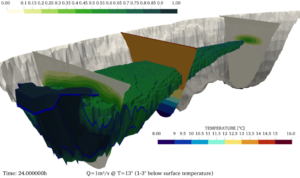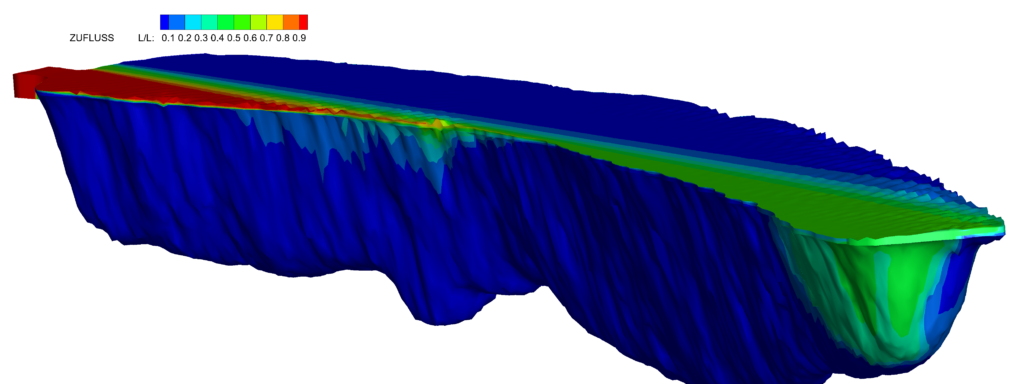
The lack of rain and river discharge, plus the long heat periods from 2016 to 2019 and the rising agriculture based fertilizers in the water reduced the dissolved oxygen in many central European lakes to nothing. Without fresh water and vertical mixing, the consequence is a dying flora and fauna as well as the resulting decay scent.
The thermal stratifications are very sensitive to numerical instabilities and dispersion effects in CFD simulations. Dispersion is in this case an artificial diffusion, which comes from linearization effects and computer algebra short comings.
These effects are irrelevant in moving waters, at least for practical applications beyond science. A dispersion of 1 cm/h is invisible in a main current of 2 m/s. But after 20 days (=480 h) without inflow or rain, the measured thermocline of a lake would be softened over 480 cm in depth in the numeric model.
Small lake models are additionally dominated by a high percentage of boundary nodes, a main source of instabilities in numeric models.
The project goal was to find advection schemes with low or no dispersion and to identify and improve this sources of dispersion in other components of Telemac 3D. This includes turbulence models, wet/try algorithms a.m.o.
The small “Lake Monsterloch” (english: “Monsters Hole”) was a good prototype study for the many central european lakes, that suffered the same problems in the exceptional hot summers of the last decade.
Telemac proofed to be the right tool to solve vertical heat exchange and simulate mixing solutions with low or no current, if one understands the definition ranges of the core routines well and if a couple of minor code fixes are added.
Contract partner was the BAW. They use our developments for their „Blaues Band Deutschland – Monsterloch“ Project.
Finally, Telemac-3D was toughend up to not only simulate stagnation waters, but also the mixing effects of wind, ground water, surface water, rain and other external forces over month long periods.

Read More:
MERKEL, U. 2019. Thermal Stratification in Small Lakes with TELEMAC-3D: Showcase “Lake Monsterloch”. In: Proceedings of the XXVIth TELEMAC-MASCARET User Conference, Paris, France ->Download<-

